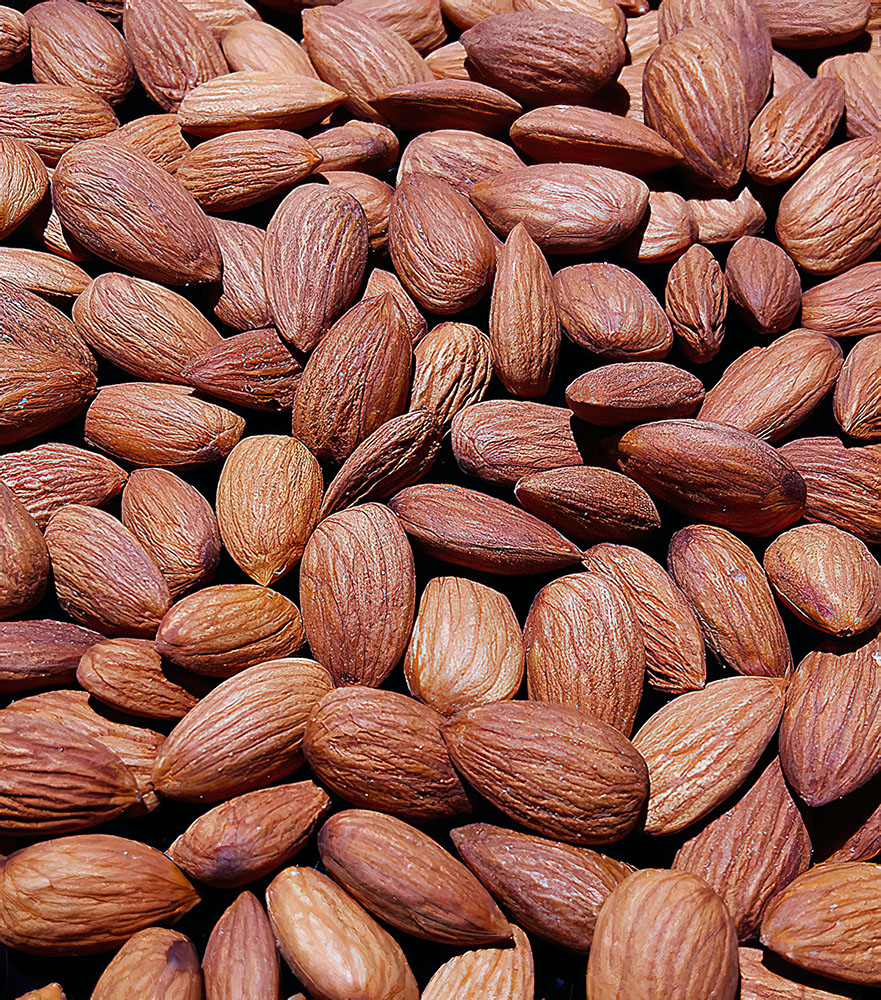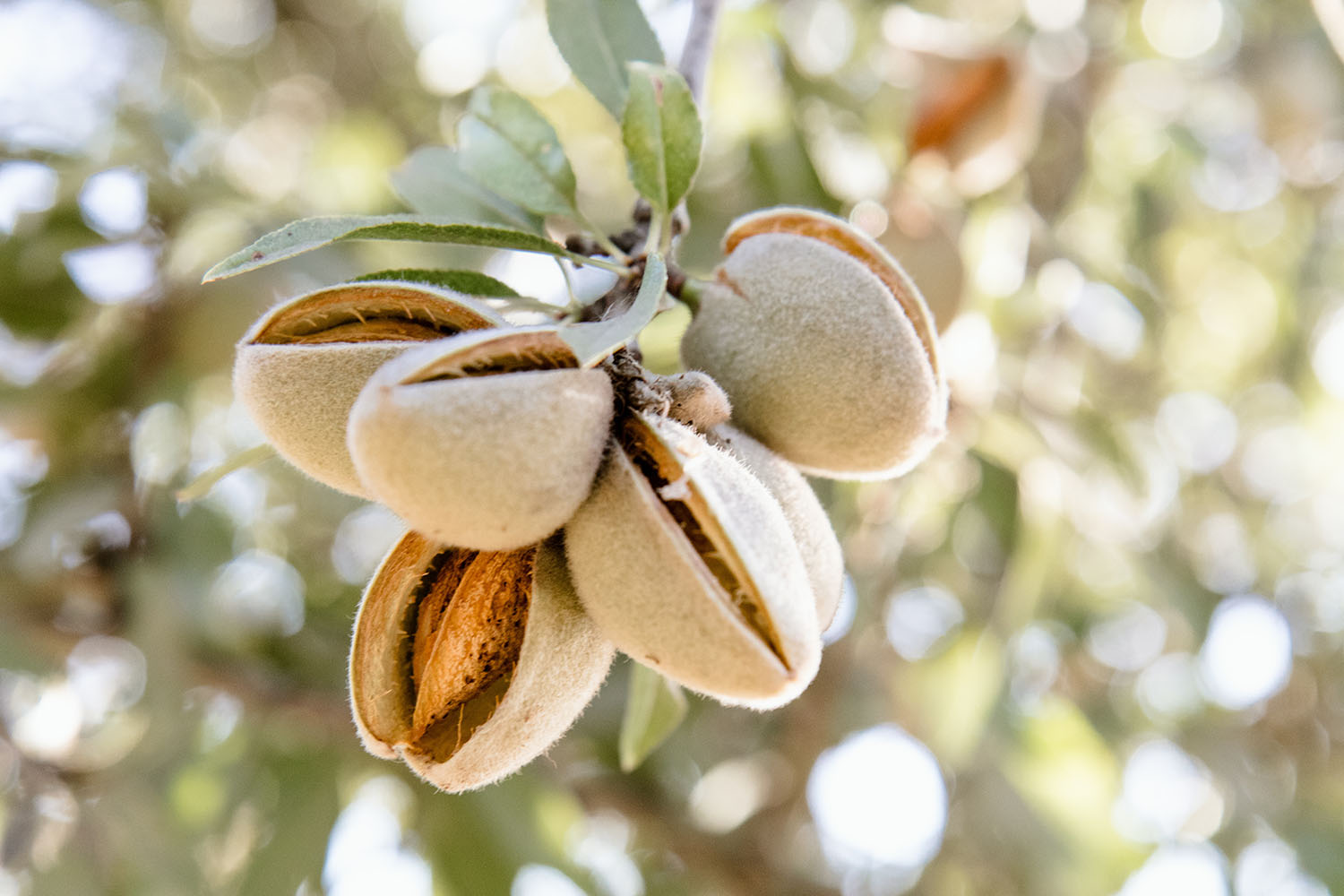Olam Orchards Australia
Direct Piloting Case Study
Australia’s largest almond producer and exporter identifies the true cost of waste with Direct.
Customer Profile:
With over 15,000 hectares of almond orchards across 11 farms in the Sunraysia region in Victoria and New South Wales, Olam is Australia’s largest almond grower.
The company operates one of the world’s largest hulling, shelling, and processing plants with over 120 full-time employees.
As a subsidiary of Olam International, Olam Orchards Australia exports to over 15 global markets.

Situation
Invisible costs
Limited breakdown of waste costs and their impact on business.
The fleshy hulls that protect an almond and its shell create a significant amount of by-product, upwards of 70% of product harvested compared to 30% for the edible kernel itself. To offset some of this material loss, almond hulls are repurposed as animal feed. Being a by-product with some demand, the hulls generate income for Olam Orchards Australia, but the true cost of associated with this by-product stream was less clear.
“It’s unavoidable, you can’t grow the kernel without the hull. A large portion of cost is attributed to the by-product stream.”
Invisible insights
Difficulty measuring return on investment of capital expenditures.
Having an incomplete view of waste streams and costs associated with the processing plant stage, Olam Orchards Australia needed better insights. When looking to make capital expenditure decisions, the almond grower could benefit from detailed waste and by-product analysis. Improved ability to attribute costs to wastage can make it easier to justify investing in reduction.
Invisible efficiencies
Anecdotal understanding of costs and losses in the orchard and plant.
In the almond business, the conversion of product from orchard to market represents one of the costliest inefficiencies. Harvest efficiency is often assumed, with a certain percentage of shrinkage in extraction rates subtracted relative to what’s been grown.




Solution
With the UN’s Sustainable Development Goals in mind, Empauer, RMIT University and the Fight Food Waste Cooperative Research Centre have created a business-ready tool that quantifies the ‘true cost of waste’ by identifying where food and non-food material losses flow across the food supply chain.
Called Direct, the solution is aligned to two international standards: The Food Loss and Waste Accounting and Reporting Standard (FLW Standard), developed by the global and multi-stakeholder FLW Protocol (convened by the World Resources Institute); and ISO-14051, a general framework for material flow cost accounting (MFCA).
This level of granular attribution enables, both, consistency in output and flexibility in the analysis of material flows and costs, with regard to product and non-product/waste destinations, in the food supply chain.
In 2020, Olam Orchards Australia participated in a pilot study, that allowed them to map material flows and determine the true cost of those materials flowing to non-product/waste destinations.
Thanks to the system’s ease of use, the almond producer was able to gain greater visibility. Using DIRECT on an ongoing basis, Olam Orchards Australia would be able to verify spend and assess the effectiveness and benefits of waste mitigation and valorization efforts.
“Direct is straightforward. Data input is easy to use, all the graphics populate as you go, and it’s easy to interpret the results.”
Outcomes
Olam Orchards Australia utilized Direct to examine the waste streams and costs associated with processing almonds in their shells and hulls, that had occurred in a recent crop year.
A better understanding of waste value
Direct’s detailed analysis gave Olam Orchards Australia a clear picture of the true cost of waste. Almond hulls destined for animal feed generated close to 2-percent of the total plant income. However, even with this [albeit drought driven significantly higher than usual market value] income offset the material costs and proportional business expenses incurred a substantial true cost of waste, when only directing hulls to the animal feed destination.
“When you plug in your electricity, gas, and salary costs, it’s strange seeing the percentage attributed to waste.”

Harvest efficiency scenarios and assessments
In the future, Direct could assist in projecting returns from efforts aimed at improving harvest efficiency as well as measuring the actual impact of efforts once they are implemented.
Access to Direct and its insights are available by either subscription or as a service.

Capital expenditure insights
Using DIRECT, Olam Orchards Australia could compare various capital expenditure scenarios and review return on investment. With greater visibility, the almond producer had detailed breakdowns of costs attributed to waste. Armed with this data, financial decisions can be made to reduce the true cost of waste.
“If you’re looking at additional capital expenditure opportunities in terms of the processing plant sorters or stick removers, you can run different assessments and see what the actual outcome is.”
Mapping hidden costs
Thanks to DIRECT’s ability to map not just the flows and costs of materials, but also the often ‘hidden’ attributable business costs of those flows, Olam Orchard Australia was able to compare scenarios as it relates to processing and value adding for non-product/waste destinations.
Cost can be attributed accurately, and alternate processes, methodologies, and plant equipment can be considered to contextualize improvements in almond processing.
New business opportunities
Having assessed the true cost of waste with DIRECT, Olam Orchards Australia has identified the potential benefit of pivoting to new, higher-value co-product destinations for almond hulls.
Such business opportunities could include compostable dinnerware or sugar alternatives for beers and other beverages.
Get in touch
Download Case Study
The above case study was created in partnership with The Fight Food Waste Cooperative Research Centre (CRC) as part of the piloting of Direct. Empauer, RMIT University and The Fight Food Waste CRC gratefully acknowledge the Australian Government’s financial contribution and support through the Cooperative Research Centres program.
© Fight Food Waste Limited 2021
Level 1, Wine Innovation Central Building
Corner Hartley Grove and Paratoo Road
URRBRAE South Australia 5064
Ph: +61 8 8313 3564
enquiries@fightfoodwastecrc.com.au
All information, data and advice contained within the case study is provided by the Fight Food Waste CRC in good faith and is believed to be accurate and reliable as at the time of publication. However, the appropriateness of the information, data and advice in the case study is not guaranteed and is supplied by Fight Food Waste CRC ‘as is’ with no representation or warranty.